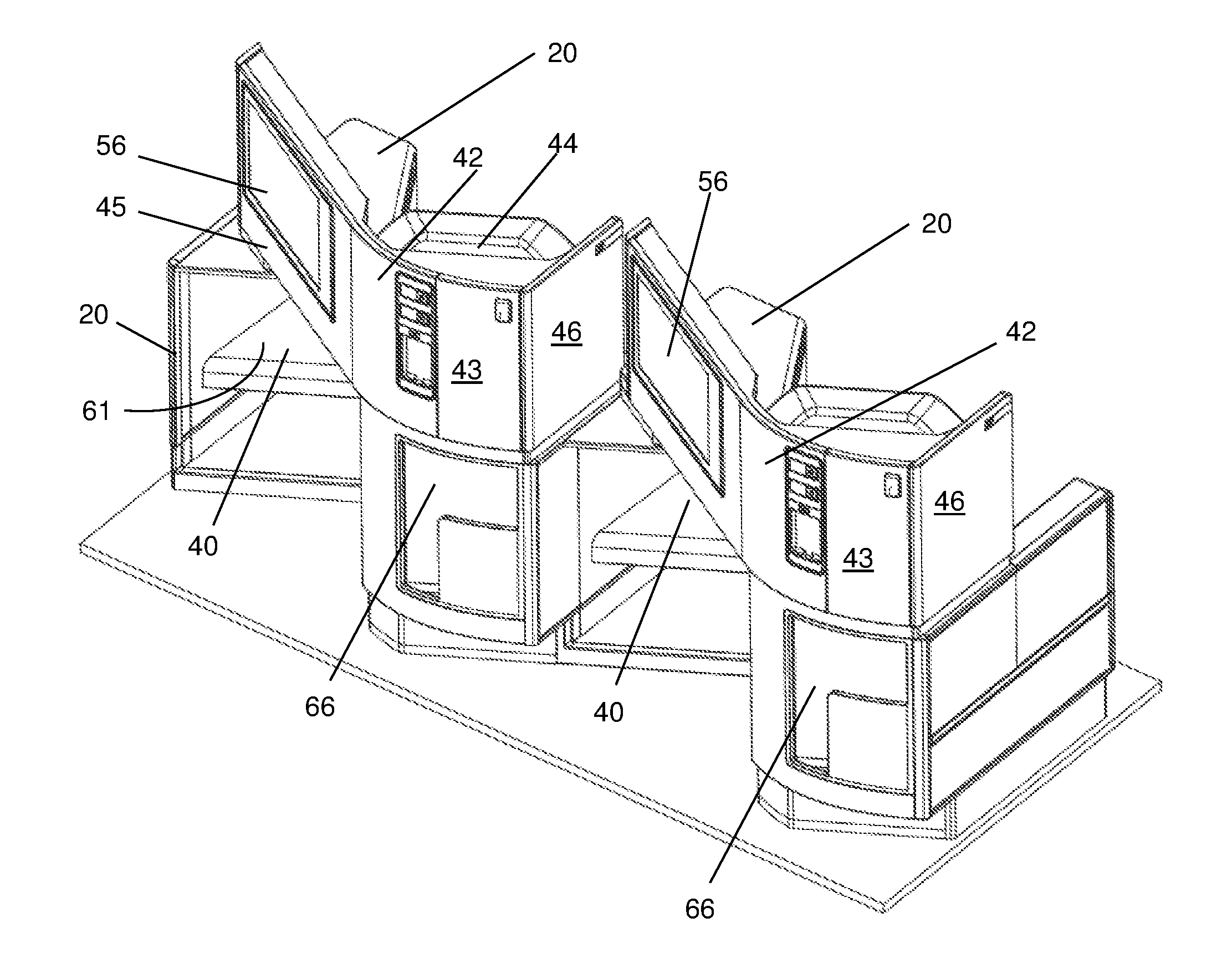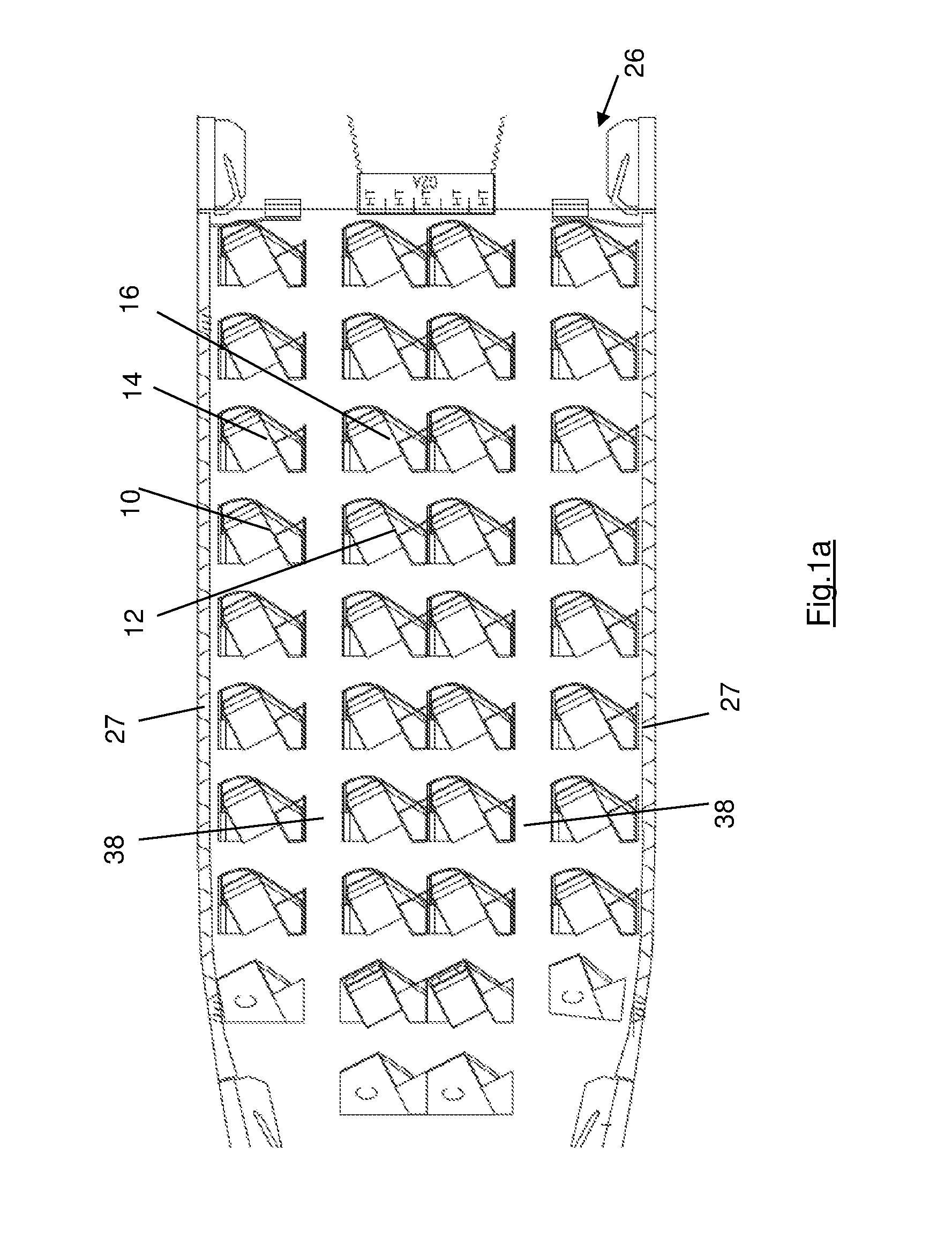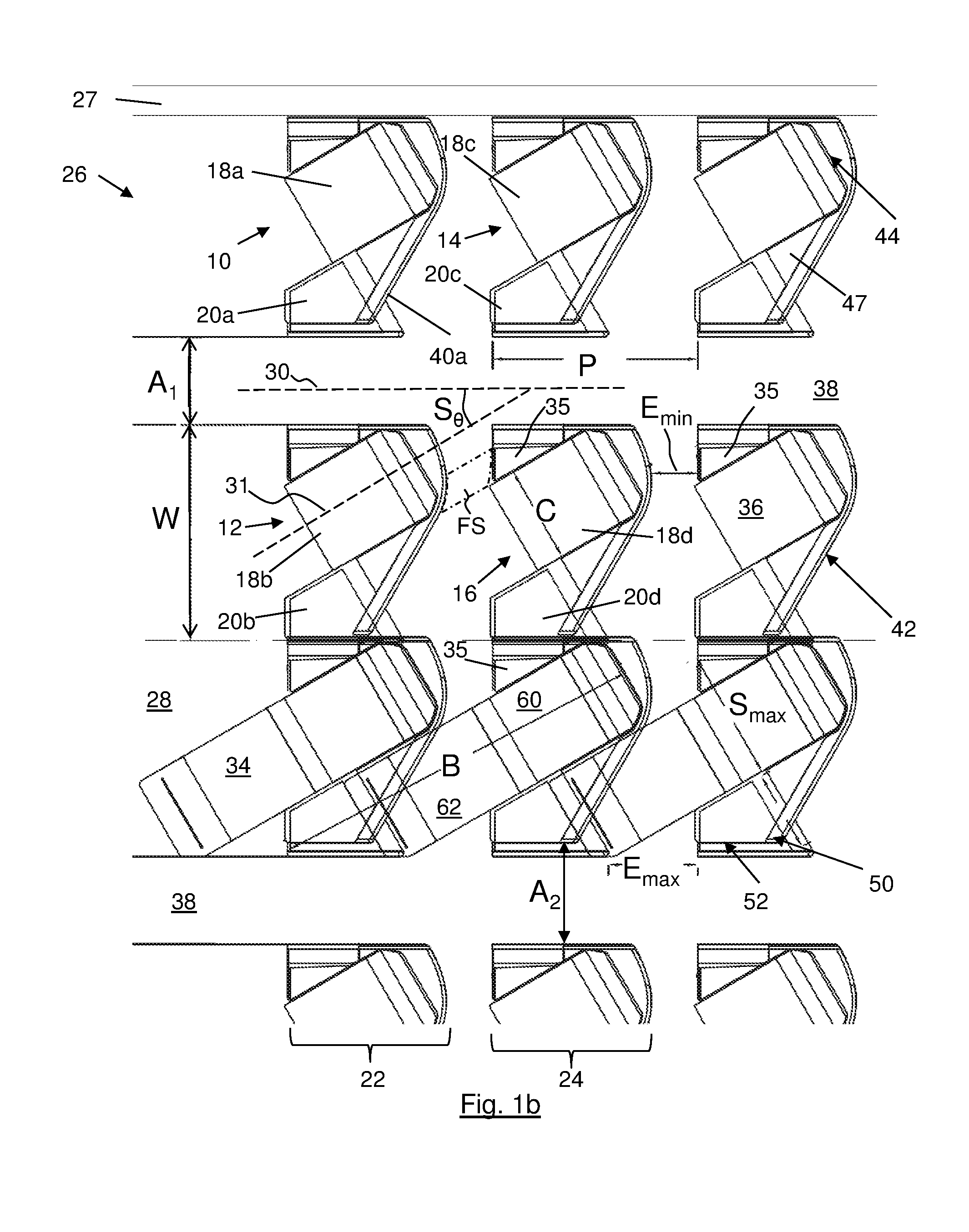High density aircraft seat arrangement
a seat arrangement and high density technology, applied in the field of high density aircraft seat arrangement, can solve the problems of compromising packing efficiency, risking space waste, adversely affecting packing efficiency in certain aircraft cabin layouts, etc., and achieves the effect of not affecting the access or usability of the aisle, increasing the density of seated passengers, and reducing the width of the aisle at a higher level
- Summary
- Abstract
- Description
- Claims
- Application Information
AI Technical Summary
Benefits of technology
Problems solved by technology
Method used
Image
Examples
Embodiment Construction
[0066]FIGS. 1a and 1b show in plan view part of a LOPA of a high density business class seat arrangement according to a first embodiment of the present invention. The seat arrangement comprises a set of seat units 10 arranged in multiple rows 22, 24 in an aircraft cabin 26, in this case the upper deck of an Airbus A380 aircraft. The seat units each comprise a seat 18 and an associated adjacent console 20. The seats are each configurable between a bed mode 34 and a seat mode 36 and each face in the same direction 31, which is one inclined to the longitudinal axis 30 of the cabin by about 30 degrees (the “seat offset angle” Sθ).
[0067]FIG. 1b shows part only of the FIG. 1a layout and thus shows three rows of four seats, the three leftmost seats (looking towards the nose of the aircraft) only being partly shown in FIG. 1b. All seat units 10 are of substantially the same size and shape resulting in a modular and consistent construction and installation of the seats. The seat units shown ...
PUM
 Login to View More
Login to View More Abstract
Description
Claims
Application Information
 Login to View More
Login to View More - R&D
- Intellectual Property
- Life Sciences
- Materials
- Tech Scout
- Unparalleled Data Quality
- Higher Quality Content
- 60% Fewer Hallucinations
Browse by: Latest US Patents, China's latest patents, Technical Efficacy Thesaurus, Application Domain, Technology Topic, Popular Technical Reports.
© 2025 PatSnap. All rights reserved.Legal|Privacy policy|Modern Slavery Act Transparency Statement|Sitemap|About US| Contact US: help@patsnap.com



